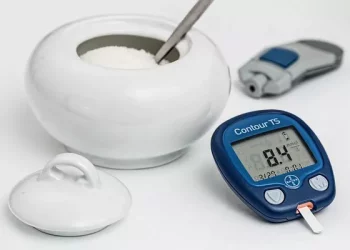A recent study published in JAMA Network Open has identified fasting plasma glucose (FPG) levels, age, body mass index (BMI), and male sex as significant risk factors for developing diabetes. The findings, based on data from the Rochester Epidemiology Project (REP), offer new insights into diabetes risk variation based on commonly measured clinical variables.
Researchers analyzed data from individuals aged 18 to 65 in Olmsted County, Minnesota, who had undergone at least two FPG tests between 2005 and 2017. Among the 44,992 participants—57.8% of whom were women—the study recorded a median follow-up period of 6.8 years. Results showed that 8.6% of participants developed diabetes, with incidence rates of 7.1% for women and 10.7% for men. The estimated 10-year cumulative diabetes risk was 12.8%.
Notably, FPG levels—even those within the normal range—were a key predictor of diabetes onset. Participants with FPG levels outside the 80-94 mg/dL range faced increased risk. Additionally, older age (particularly 60+ years), male sex, and BMI abnormalities significantly contributed to the likelihood of diabetes development.
The study highlighted the cumulative impact of these factors. For instance, a 55-to-59-year-old woman with a BMI of 18.5-24.9 and an FPG level of 95-99 mg/dL had a 10-year diabetes risk of 7%. However, if her BMI increased to 30-34.9, the risk rose to 13%, and if her FPG level climbed to 105-109 mg/dL, the risk jumped to 28%.
The researchers emphasized that these findings could guide early interventions—both lifestyle modifications and pharmacologic treatments—for individuals at the highest risk, potentially reducing future diabetes-related complications. They also called for further studies to validate these risk associations across diverse populations.
Related topics:
Diabetes Association to Prioritize Education Amid Rising Cases
Nutritionist Shares 5 Easy Ways To Manage Type 2 Diabetes
Future Diabetes Treatments Might Involve Eating a Little Poop

























